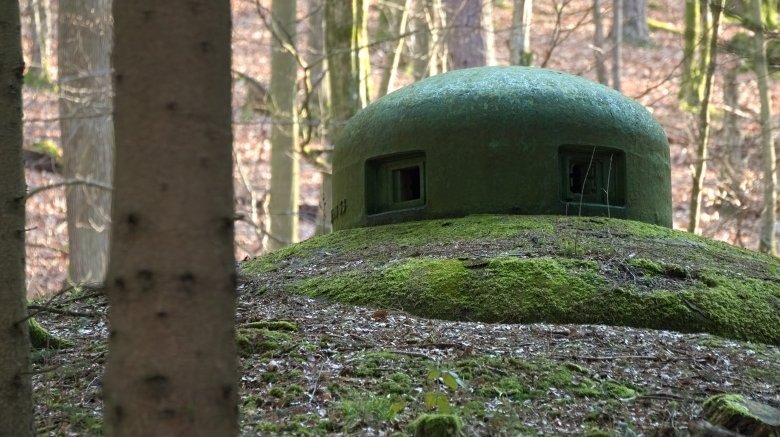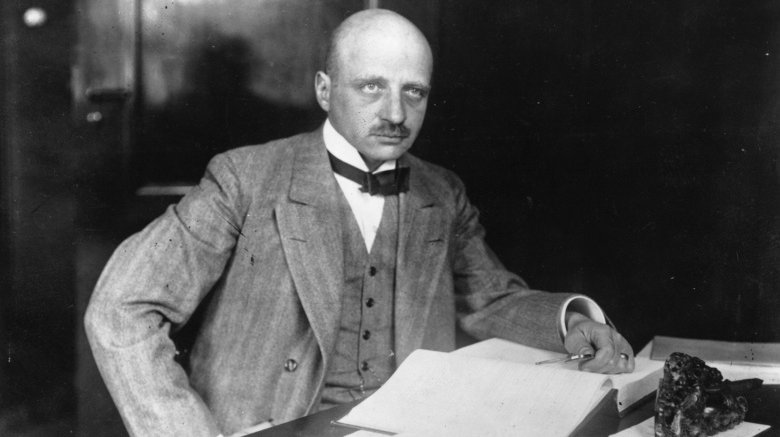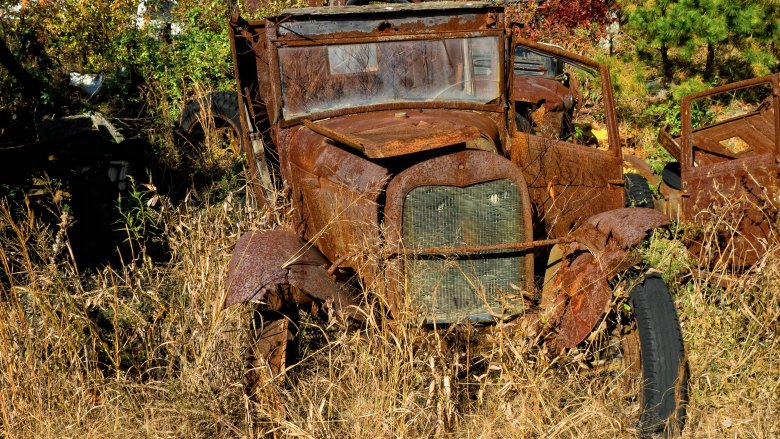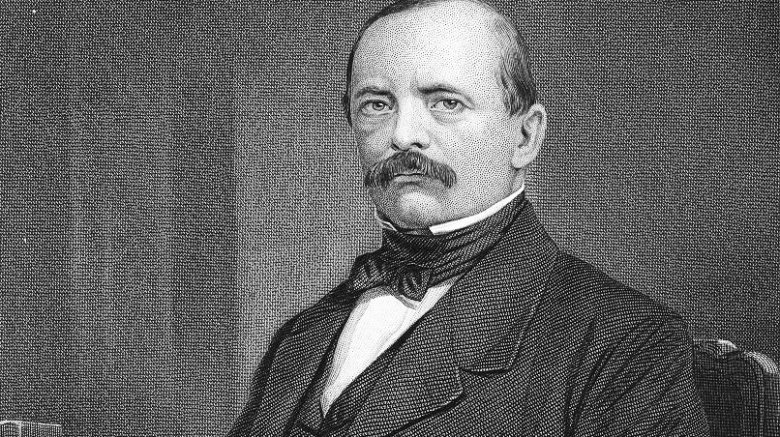The Worst Ideas In History
We all have terrible ideas, but few of them change the whole course of history and end in the deaths and misery of millions of people. Every once in awhile, people do have ideas this destructive, and often times, dreamed them up with good intentions.
France didn't have any defenses near Belgium to keep them happy, Germany simply invaded through Belgium
After France narrowly won the first World War, they realized if another war came, they would need to have fortifications already in place, or else risk getting wrecked by another German invasion. Thinking the next war would play out in the same way as World War I, with its long, immovable trench lines and stalemate combat, France invested in the massive, fortified Maginot Line of bunkers.
The Line was constructed all through the 1930s along the French border. Huge bunkers dotted the line, giving the French military excellent fortifications. But the military planners made two huge mistakes. One, they assumed the next war would be fought just like World War I, and were unwilling to recognize the technological leaps in mobility that happened during the interwar period. Secondly, they only built weak fortifications, not strong bunkers, on the French-Belgian border. They wanted to avoid diplomatic hassles of building a wall between Belgium and France. They also assumed that Germany would not violate Belgian neutrality if they decided to invade France, as that would risk bringing England into the war. Anyways, placing the fortifications in the south would directly protect key factories.
As any student of history knows, Hitler did not play by the rules. Nazi commanders knew attacking the Maginot Line would result in disaster, so they just skipped around it, invading France through Belgium. The French were caught flatfooted. Most of their defense money went into the line, so the rest of the military was horribly underequipped. They couldn't effectively fight the Nazis and were quickly overrun. While France had been a major player in World War I, having their thinking tied into old school defensive tactics knocked them out early in the war, making defeating the Nazis that much harder for the rest of the Allies. It seems like giant walls only work out for the Chinese.
Fritz Haber invented Zyklon B to protect crops, Hitler used it to kill Jews
A lot of things keep our society afloat, but one of the least appreciated is fertilizer. Scientists throughout history have worked to improve fertilizers, but few have achieved success like Fritz Haber. In 1909, Haber invented a way to synthesize the ammonia for fertilizer from gases in the air, which won him the Nobel Prize and revolutionized farm production.
Years later, Haber and his team invented a new pesticide gas that was amazingly effective at killing insects and rodents. Hailed as a major achievement, Haber's gas went into mass production throughout Germany and into the Nazi era. Knowing the effectiveness of the gas, Nazi officials tweaked it and began using it for a despicable purpose: extermination of the Jews. That's right, Haber's pesticide had morphed into the infamous Zyklon B. Thankfully for his conscience, he died before it could go into full effect.
Haber's simple peaceful pesticide became one of the most disgusting weapons the Nazis ever used, killing millions. The ultimate irony? Haber was Jewish.
Everything Thomas Midgley created was unintentionally terrible for the environment
If you had to choose one person who has done the most damage to our environment, Thomas Midgley might be that person. During his life, he did so much harm to the environment, environmentalists say he had more impact on Earth than any other single organism. The worst part of it all? He did everything completely accidentally.
Midgley got his start working on the problem of gasoline in car engines. Early gas wasn't very dependable, and Midgley fixed it by adding lead into the gasoline. Lead, as we know, is toxic. Even back in the 1920s, Midgley and others knew that lead was dangerous, but they went forward with it anyways. For decades, Midgley's leaded gasoline wrecked the environment and caused health problems, until people finally got wise and stopped using it.
That's pretty bad, but Midgley was somehow able to trump his first terrible idea. After developing leaded gasoline, Midgley got hired to figure out how to make refrigerators safer and less expensive by using different cooling gases. He created Freon, a coolant that soon became commonplace in refrigerators, and was the first mass market chlorofluorocarbon. At the time, however, nobody realized that Freon and other CFC's were creating a hole in the ozone. Fifty years after Midgley's idea, scientists realized that these gases were punching a hole in the ozone layer, threatening to drastically change the Earth's environment. The hole in the ozone layer was ultimately traced back to Midgley, and it cost world governments billions of dollars trying to fix it. No matter how much you have messed up this week, it is not as bad as what he did.
TNT as invented as a yellow dye, eventually became ... TNT
German chemist Joseph Wilbrand was working on some new chemicals when he invented Trinitrotoluene in 1863. He made the new compound as a yellow dye, but as it turns out, trinitrotoluene isn't just a good dye, it's also explosive. We know it as TNT.
TNT has an extremely high activation energy, meaning that you need a lot of energy to get it to blow up. Naturally, nobody was trying to make their yellow shirts explode, so its destructive capabilities remained hidden. Wilbrand's peaceful invention wasn't actually used for death and destruction until 1902, when the German army discovered that it was explosive.
To get around the high activation energy, the Germans used TNT as fillers for shells. The impact of the shell on armor would provide enough energy to ignite the TNT, creating a huge explosion. Ships and artillery guns used TNT shells, and they later became useful as a tank shell filler. Eventually, all the warring nations got a hold of TNT and it became one of the biggest war weapons in history. Thousands were killed and maimed by Wilbrand's dye. We kinda feel bad for the guy. He just wanted to make some nice shirts, but made explosive artillery shells instead.
The Chinese kill millions of sparrows to keep food for themselves, unleashes a literal plague of locusts
In the 1950s, Chairman Mao Zedong of China set about reforming his new communist country with the Great Leap Forward. As Chairman Mao looked over his new communist country, he noticed that the population still suffered from animal pests. Especially angering were the sparrows, which ate grain from the farms. Chinese scientists concluded that for every 1 million sparrows killed, there would be enough surplus food for 60,000 people. The course was clear: the sparrows had to go.
Chinese persons destroyed any sparrow they found. Sparrows were shot out the sky, their nests destroyed, and their eggs broken. Cities went on anti-sparrow hunts, mobilizing their whole population to kill the birds, and they were extremely effective. Hundreds of millions of sparrows died, almost making them extinct in China. But despite the revolutionary zeal, Chinese leaders slowly became aware that they had made a terrible mistake. It turns out that sparrows form an important link the ecology of China. They eat grain, but the main part of their diet is locusts, which are much more destructive to the farms.
So, yep. With the sparrows dead, the locust population skyrocketed and invaded the Chinese fields. Grain production was devastated, and the country fell into a famine that lasted three years. By the time food supplies got back up to their normal levels, 30 million people were dead from malnourishment. Chairman Mao learned that fighting international capitalism might be straightforward, but fighting Mother Nature is not. She always gets her revenge.
European nations colonized Africa so as to avoid conflict, creates tons of it
Up until the late 1800s, European colonies in Africa remained on the coasts. No power had made headway into the middle of the continent, but many were thinking about claiming huge swaths of the continent. Since European politics were touchy, the heads of state realized that rapid uncontrolled expansion into Africa's heart would lead to wars, as rival nations tried to claim the same land. So they set about fixing it.
German Chancellor Bismark called a conference together in 1884, inviting the major powers of Europe to portion up the land. With complete disregard to the native populations, the Europeans split up Africa into zones of control that the nations could expand into. Instead of considering the needs of the Africans, the Europeans just sliced up Africa how they saw fit. As soon as the conference ended, they colonized. By 1902, European powers claimed 90% of the African continent.
The conference wanted to stop future wars, but it did the exact opposite. In a turn of events that should have surprised no one, native Africans were not too enthusiastic about Europeans claiming their lands. Colonial wars erupted, native populations were decimated, and strict colonial rule subjugated the African people, which led to despair and violence. Not only that, but wars ended up happening between the European powers, anyways. During World War I and II, the various nations attempted to take African territories from each other, leading to violent and costly African theaters.
It wasn't until 1957 that the first country, Ghana, broke from colonial rule. Even today, we're still facing the consequences of this terribly short-sighted conference, and will likely curse it for years to come.
Introducing two dozen rabbits to Australia to hunt them destroyed an entire ecosystem
Unlike the other stories we're spinning in this article, this one didn't start out as a well-intentioned idea, unless you ask Elmer Fudd. But oh, what a terrible it was.
When the first European settlers landed in Australia, they went out to explore the vast wilderness and do what they usually did in new territory: hunt. Thomas Austin was one of the explorers in the mid-1800s who landed and set about killing anything that approached his property. Getting bored of the local Australian animals, Austin wrote to his brother to send 24 rabbits on the next shipment of supplies. As soon as the rabbits arrived, Austin let them loose, excited for new game.
But things went horribly wrong. Since Austin and his fellow settlers had killed so much of the local wildlife, there were no predators for the rabbits. The rabbits bred like ... rabbits, popping out hundreds of new bunnies, way more than the settlers could hunt. Seven years after Austin's mistake, he had killed 14,000 rabbits on his property alone. By 1940, there were 800 million rabbits in Australia, all descended from Austin's original group.
As cuddly and cute as rabbits are, they are terrible for biodiversity. The carrot-munching calamity made the three native Australian parrot species and twenty-three of the twenty-six native tree species go extinct. Throughout the 20th century, the Australian government has embarked on extreme measures to kill the rabbit population, including releasing the deadly biotoxin myxomatosis. Even though they killed nearly 100% of the population, the remaining few rabbits still got it on, and the population shot up again. 150 years and $600 million later, Australia is still dealing with the selfish desires of Thomas Austin.
Coating Enfield P53 rifle bullets with animal lard to make them work led to an Indian-British war
The Enfield was a front-loading rifled used by the British Empire in the 1850's. Bullets for the gun came in paper cartridges that soldiers had to tear off the top of with their teeth before loading. When the Enfield P53 was exported to colonial soldiers in India, the rifle makers had to coat the cartridges with some sort of grease, to keep the gun firing and keep the ammunition dry while in storage. They decided to grease it with animal lard from cows and pigs. During combat, the soldiers would get a little of the lard in their mouths from biting the cartridge, which seems like a gross, but, minor inconvenience. Heck, maybe the taste of pig fat was welcome during battle.
But the Enfield cartridges caused huge problems in India. Indians served in the British colonial forces, and according to their various religions ingesting cow or pig lard made them unclean, even if it was due to combat operations. The soldiers were already angry at the British for treating them like second-class citizens and exerting colonial rule. Now they faced religious defilement because the British ignored their culture!
Rumors spread that the English planned to convert the Indians to Christianity by making them impure, igniting years of festering disdain for the colonial government. Huge groups of soldiers rebelled against English rule, and a full-blown civil war ignited, which lasted for months. Even though England technically won, the conservative Indian culture reasserted itself, leading to stronger national character that eventually lead to their independence and weakening of British overseas power, all because of some pig fat. So much for bacon bringing everyone together.







